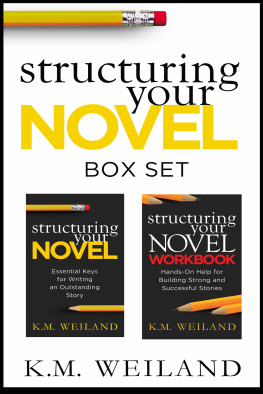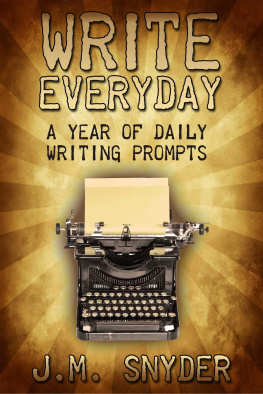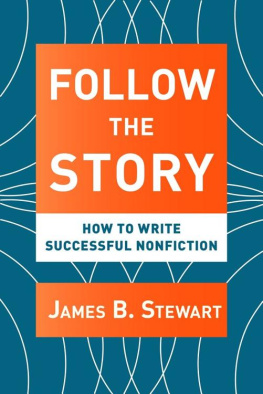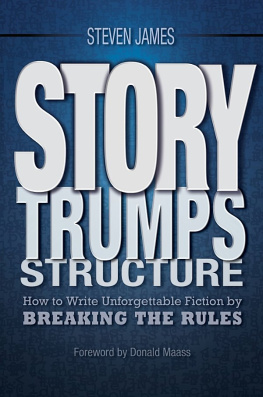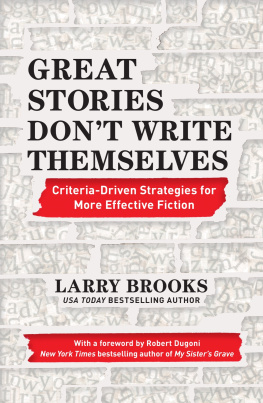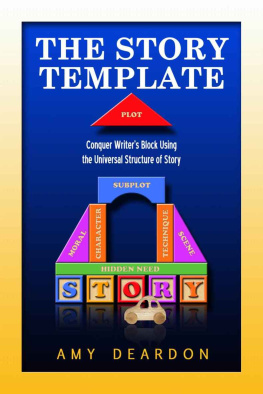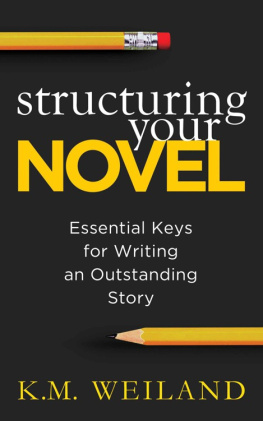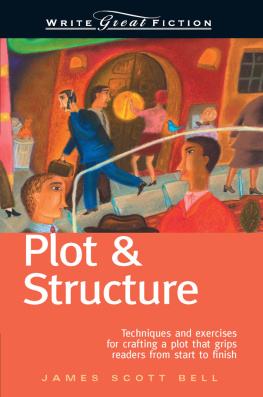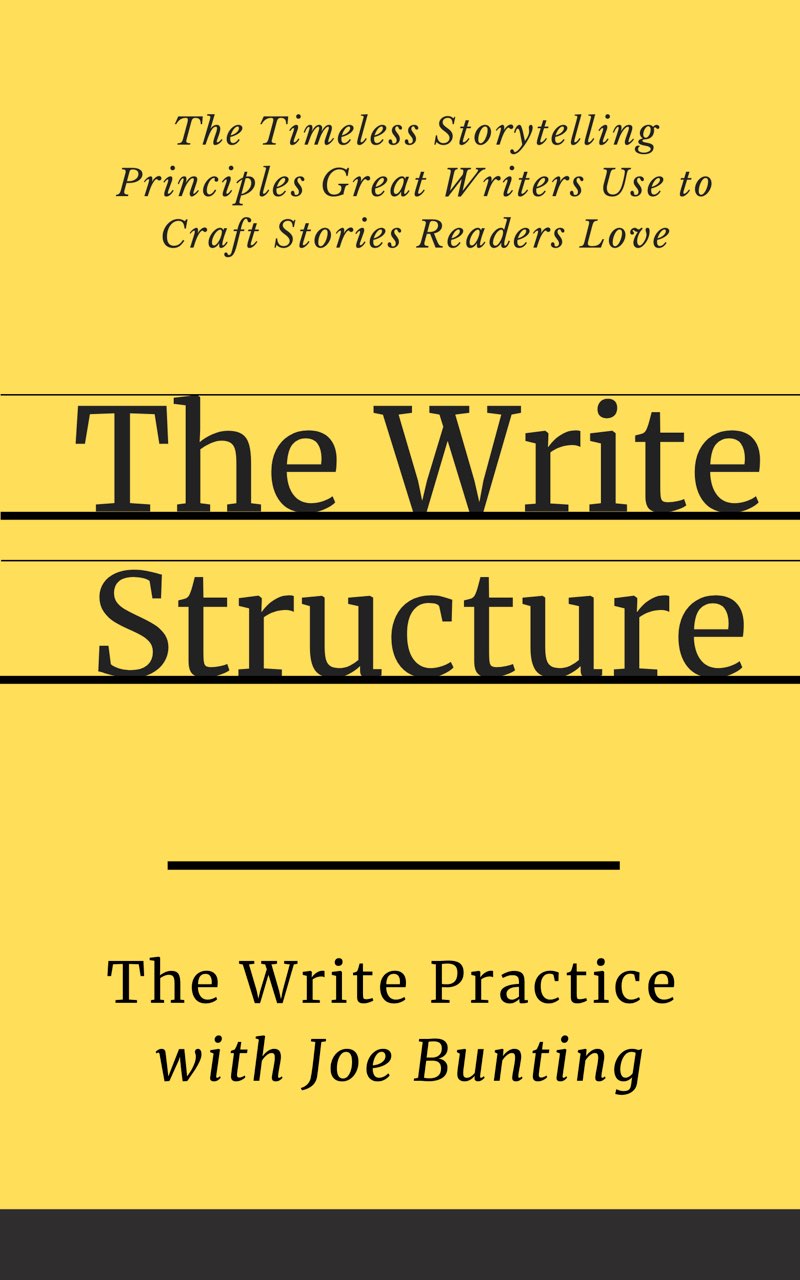All rights reserved.
No part of this book may be reproduced in any form or by any electronic or mechanical means, including information storage and retrieval systems, without written permission from the author, except for the use of brief quotations in a book review.
Get access to a host of downloadable tools and worksheets when you sign up at thewritepractice.com/structure.
For all the members of The Write Practice community. May you enjoy your writing, may it bring your life deep meaning, but most of all, may you finish your books.
Introduction
I d like to tell you a secret. Something Ive never told anyone, something no one but my wife knows.
Something that is mortifying.
Ready? Here goes.
I am a crier.
If there are two types of people in this world, people who cry in movies and people who dont, Im the first type.
I cry over every movie.
Forrest Gump. Yep.
The Matrix. Cried over it.
Kung Fu Panda. Not once, not twice, but three times.
I cant help it.
And its not just films. I cry when reading books. I once bawled while reading TheBoys in the Boat in an airport, which is not a great place to have a breakdown since I kept expecting people to come up to me asking if I was safe.
I cry over television shows. Hodors final scene in Game of Thrones? I was a wreck.
Ive cried over commercials and YouTube videos.
I cry over HGTV shows. Fixer Upper? Dont even start.
Movie trailers are actually the worst, like little emotion bombs. After twenty minutes of them at a theater, I feel wrung out.
I dont want to cry. Im not trying to cry. It would certainly be more convenient not to cry. It just happens.
There are a few exceptions, though, things that will keep my tear ducts from activating. I cant cry in stories that are boring, too dark or cynical, or too happy or light. But honestly every once in a while, even in the lamest juvenile story Ive been forced to watch with my kids, Ive felt my tear ducts start to burn.
Which is why it was so troubling when I read the first draft of my memoir, Crowdsourcing Paris, and realized that my eyes had been dry the whole time.
My tears respond to the moments of a story that are most powerful, but in my own book they werent working.
Which meant my book wasnt working.
I was devastated.
I had already been working on this book for two years. Even more, by this point in my writing career, I had already written several books, including a book that would become a Wall Street Journal best-seller. I had studied creative writing in college, was part of a vibrant community of writers, many of whom were best-sellers, and had been a professional writer for the better part of a decade. Worse, I had been teaching writing on my website, The Write Practice, for five years.
I was helping a community of millions of people become better writers, but I had no idea how to help myself.
So when my friend Tim Grahl invited me to a workshop in New York taught by Shawn Coyne, the creator of Story Grid, a story structure framework, I had two thoughts:
1. I already know this stuff well enough. Do I really need more? and
2. Im desperate. Ill try anything if it can help me figure out what was wrong with my book.
I flew up to New York City and sat in a classroom with thirty other people, including Stephen Pressfield, one of my favorite writers and the author of Gates of Fire and The War of Art.
Sitting there reminded me of my college screenwriting class with John Wilder, a veteran Hollywood screenwriter, who, on my first day of class, wrote on the board in bold letters, STRUCTURE STRUCTURE STRUCTURE. When I got back my final project, it was covered with red ink and exclamation points.
I had already been learning about structure for years, from Wilder but also Blake Snyders Save the Cat and Joseph Campbells TheHero with a Thousand Faces, not to mention hundreds of novels, short stories, and films that I had studied and even broken down to their elements.
But it wasnt until that workshop that I finally realized what was wrong with my book.
It didnt have an emotion problem or a writing problem.
It had a structure problem.
And all the polishing and revision in the world wouldnt save it until I fixed the structure first.
That experience began a long exploration of plot. Not only did I revisit what Id already learned about story structure, I discovered new sources too.
I learned from Robert McKee, the famed story workshop teacher and author of Story, who taught me about values and dramatic reversals.
I read Freytags Technique for the Drama, the source of Freytags Pyramid, one of the first plot diagrams, at least in the West.
I read Aristotles Poetics, often cited as foundational to story structure theory but which I honestly found kind of vague and uninspiring.
I learned Randy Ingermansons Snowflake Method, Dan Harmons Story Circle, Dan Wells 7-Point Story Structure method, and a half-dozen other frameworks.
I read books, took online courses, went to live workshops.
So much of what I learned was helpful for my book and my storytelling in general.
But there were also a couple of problems that I ran into.
Sometimes, these frameworks contradicted each other. Or else used different language to describe the same thing.
Other times, their ideas made sense on paper, but when I went to apply them, they didnt work.
Other teachers had great ideas but werent great teachers and I had to do extra work to fully understand them.
Many had theories that worked well for some kinds of stories, say sci-fi/fantasy stories, but not others, like contemporary romance or travel memoir.
Some story structure frameworks were for editors, not writers. Most writers dont need to know all the jargon and intricacies of a particular framework. It just weighs you down and distracts from the writing. Usually, you need just enough to write the next draft.
The biggest takeaway, though, was that not all stories are the same, which sounds obvious, but also all stories are made of the same things.
In this book, I want to share the things stories are made up of. Ill show you how you can arrange and dismantle and rearrange them in a way that works for the story youre trying to tell. And Ill try to bring together all the diffuse theory and grand ideas of all of the story gurus Ive learned from into one simple process that you can put to practice in your writing immediately.
Why Are You Reading This?
Thats what this book is about. Maybe, like me, youve learned a lot of theory about how stories work, and it still isnt working for you. Or maybe this is your first time learning about story structure.
The purpose of this book is not to spend hours learning storytelling jargon or to expound one more story structure framework that the world doesnt really need.


